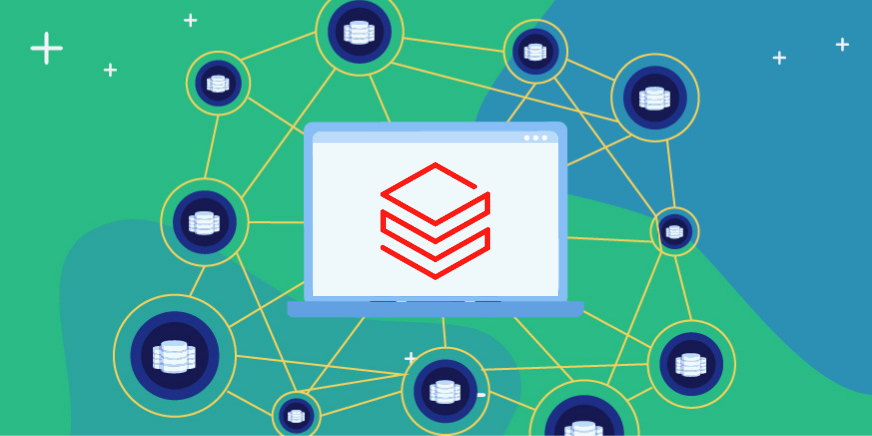A data security platform (DSP) is a comprehensive solution designed to enable and scale secure data usage. It consolidates security and protection features, unifying previously isolated capabilities under a single policy framework, significantly enhancing data security, efficiency, and facilities comprehensive data protection. Almost every organization today is taking action to protect its data but how do you know if you need a dedicated platform for data security?
Some Signs That You Need a Data Security Platform
The absence of a robust DSP can lead to a myriad of problems ranging from the inability to effectively map and control who has access to what data and monitor how that data is being utilized, posing significant security and compliance risks. Additionally, without a DSP, scaling data usage becomes a burdensome, manual process, resulting in high overhead costs. The lack of scalability can impede an organization’s agility and hinder the timely delivery of data to support existing and new projects. The end result is often data consumers having to go through lengthy, time-consuming processes to obtain the data they require, ultimately hindering productivity and innovation within the organization.
Locating Sensitive Data Is a Challenge
Often, it can feel impossible to locate sensitive data. Finding sensitive data can be costly in terms of data engineering time and resources, until it becomes prohibitive. But failing to locate and maintain sensitive data has many detrimental consequences, including failing to meet an audit, straining data engineering teams’ time and resources, and reducing the time-to-value of data.
Discovering and securing sensitive data is often difficult across different data stores. Each individual platform has different requirements, native capabilities, and locations for data. Manually locating this data is different for each data store, which can include various formats and schemas, making it almost impossible to maintain a continuously updated data catalog.
Manual Data Security Reduces Time-to-Value from Data Slows Down Productivity
Data is often siloed across multiple databases, data warehouses, and data stores. The inability to quickly locate and share data has a major impact on generating time-to-value from that data. Data silos in combination with manual data access processes further erode the ability to generate value from data, reducing organizational productivity and innovation.
Manual data access controls significantly slow productivity. Data engineers first need to manually locate and then mask sensitive data reducing the ability to share and enable data use quickly. Additionally, relying on a manual process to request access to data is slow and as a result of the overwhelming number of access requests, data engineers and DevOps teams often neglect removing access when it’s no longer relevant, or granting blanket access. Both of these situations result in security risk exposure.
Manual data protection processes create hurdles to accessing and sharing data securely. This delay in data availability directly impacts the time-to-value for data, reducing the organization’s ability to respond quickly to market changes or customer needs.
An additional productivity cost from manual data access process is that it diverts data engineers and DevOps teams from focusing on more strategic data initiatives and leads to slower data provisioning. When data engineering and DevOps teams are burdened with manual data protection tasks and slow data provisioning, it hampers their innovation ability. These teams should drive innovation by leveraging data for analytics, machine learning, and application development. However, manual processes divert their energy and resources from creative and strategic endeavors, stifling innovation potential.
Streamlining data security and access control empowers data engineering and DevOps teams to focus on what they do best—driving innovation by delivering actionable insights.
Need to Maintain Compliance and Audit Readiness
Data-driven organizations must be compliance and audit ready. Preparations for meeting audits take a significant amount of resources and time. Failure to meet audit requirements, which are very complex and constantly evolving, can result in significant project delays.
If you’ve experienced a data breach or security event, you likely understand the necessity of protecting your data. Remaining compliance and audit ready is just the beginning. Knowing and understanding who has access to what data and how that data is being used has a much larger scope.
Losing customer data is a worst case scenario for many organizations resulting in large fines, the cost of investigating and notifying a data breach, loss of customer confidence, reputational damages, legal actions, operational disruptions, loss of intellectual property, future compliance challenges, and increased cybersecurity costs.
How DSPs Solve These Challenges
DSPs seamlessly connect with various security tools and systems, ensuring a unified and streamlined approach to data protection.
1.Comprehensive data discovery and classification. DSPs use automated tools and algorithms to scan and identify sensitive data across various data stores, irrespective of their formats or schemas. This automated process significantly improves data security posture. It reduces human error the time and resources required for data engineers to manually locate sensitive data, making it cost-effective and encouraging secure data sharing.
The DSP also continuously updates a centralized data catalog, making it easier to maintain and keep track of sensitive data across different platforms. By facilitating efficient data discovery and classification, a DSP helps organizations meet audit requirements, reduces the strain on data engineering teams, and accelerates the time-to-value of data, ultimately minimizing the detrimental consequences of failing to locate and maintain sensitive data.
2. Automating data access controls. DSPs eliminate the need for manual data security processes, such as locating and masking sensitive data and managing access requests. This automation significantly accelerates data provisioning, through frictionless data access control, making data readily available for analysis and decision-making, ultimately reducing the time-to-value for data.
Furthermore, DSPs provide a centralized platform for managing and securing data across various data stores, eliminating data silos. This streamlines locating and sharing data, improving data accessibility and collaboration. As a result, it enables data teams to drive innovation, respond quickly to market changes, and enhance the organization’s ability to extract value from its data assets, ultimately increasing productivity and efficiency.
3. Compliance and audit readiness. DSPs enable organizations to establish and enforce data security policies, control user access to sensitive data, and monitor data usage in real time. They offer a centralized platform for managing and tracking who has access to what data and how it is being used, which is essential for meeting complex and evolving audit requirements.
By automating data security and compliance measures, DSPs reduce the time and resources required for audit preparations. In the event of a data breach or security event, DSPs facilitate rapid incident response, helping to mitigate the consequences such as large fines, customer data loss, legal actions, and reputational damage, ultimately ensuring ongoing compliance and reducing cybersecurity costs.
Core Capabilities of a DSP:
- Data Security Policies: Comprehensive development and enforcement of data security policies ensures that data access is consistent, compliant, and secure. The automation of this process reduces the risk of over-privileged uses and the risk of data breaches.
- Data Authorization: Automated user access management through granular just-in-time and self-service access so that users are not over-privileged, enhancing security and accelerating data enablement to generate productivity.
- Data Governance Policies: Effective data governance policies that comply with data privacy regulations and industry standards to understand what data is available and how it is used.
- Discovery of sensitive data: Continuously searches for sensitive data across disparate data platforms and regions so that the location of all sensitive information is known.
- Audit: Comprehensive audit trails and logging capabilities enable organizations to track and report on data access and changes, facilitating compliance reporting and data security.
- Monitoring: Monitoring and alerting, as well as the proactive approach to understanding who has the potential to access data, enables organizations to prevent and respond to security incidents immediately.
- Data inventory of sensitive data: Continuous and automated detection of sensitive data ensures that data inventory is always updated. Dynamic mapping of sensitive data improves efficiency, reduces risk exposure, and is easier to manage.
- Integration: Robust integration capabilities by seamlessly connecting with various data platforms, identity providers and other components of your data stack. This integration ensures that the DSP easily scales with your organization’s data.
Overall, the data security provided by a DSP plays a pivotal role in an organization’s security posture. It empowers organizations to respond swiftly to emerging threats, minimizing the potential damage and protecting sensitive data from unauthorized access or malicious activities. Simultaneously, DSPs enable the quick and secure movement of data to different teams so that they can improve the time-to-value from data, enhancing productivity and project completion.
Conclusion
DSPs improve data security, ensure compliance, and empower business innovation. By deploying these platforms, businesses can fortify their data security posture, reduce the risk of data breaches, and enhance their customers’ trust. Furthermore, they gain the agility to adapt to evolving security challenges and compliance requirements.
The potential benefits are not just confined to mitigating risks; they extend to improving the organization’s ability to use its resources, including data. Sharing data quickly and easily between teams enables them to drive innovation and productivity while reducing resource burden.
Satori’s data security platform enhances productivity and provides security and compliance through automated data access controls. To learn more, book a 30 minute consulting call with one of our experts.




